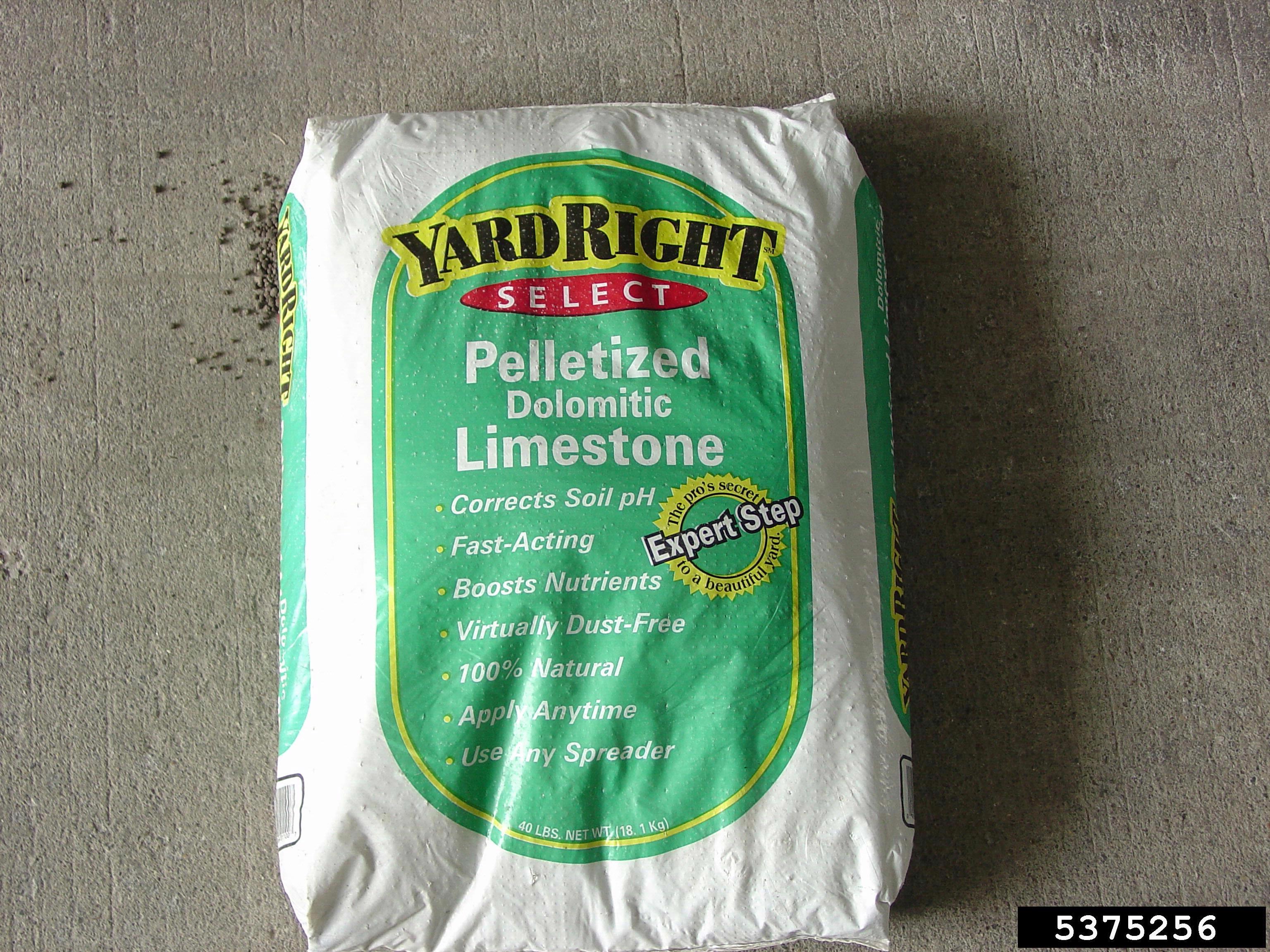Liming is an important step in maintaining a healthy lawn.
- Types of lime to apply to a lawn:
- Agricultural limestone or "Ag lime" is a finely granulated calcitic limestone. The finer the grind or mesh size, the more readily it will act to raise soil pH. Powdered lime is faster acting but messier to apply than pelletized lime.
- Pelletized lime is very similar to ground ag lime but easier to apply in this pellet form.
- Dolomitic lime also contains calcium carbonate and magnesium carbonate. Recommended for raising pH on low magnesium soils.
- Burnt or hydrated lime should not be used on lawns. They are too caustic.
- The optimum pH for turf growth is 6.0 to 6.8. If the pH level falls below 5.5, turf growth will be compromised.
- Soils in Maryland have a tendency to become acidic over time and a soil test should be performed every three to four years to check the pH. Soil test results will provide a liming recommendation when necessary. If more than 50 lbs. of limestone per 1,000 sq. ft. is recommended, the amount should be split in to two applications. For example, if 85 lbs. is needed, apply 50 lbs. immediately then wait six months to apply the remaining 35 lbs.
- Limestone should be applied with a lawn spreader. To attain uniform coverage, apply half of the lime in an east-west direction and the remainder in a north-south direction.
- Lime can be applied any time, but the ideal time is in the fall. The freezing and thawing of the soil over the winter will help to incorporate the lime into the ground. It is not recommended to apply lime on snow or frost-covered turf.
- Incorporate the recommended amount of lime (according to soil test results) into the soil before starting a new lawn or major renovation.
